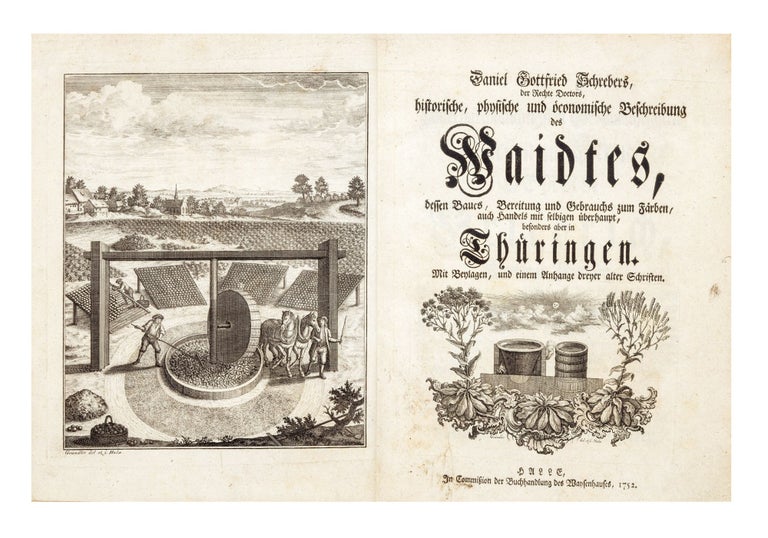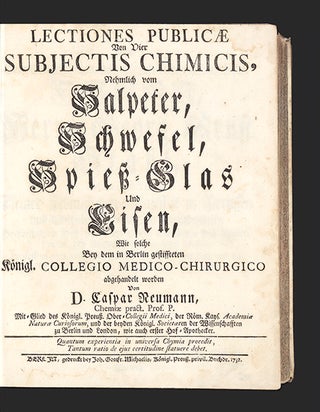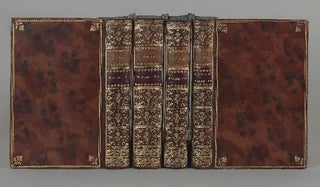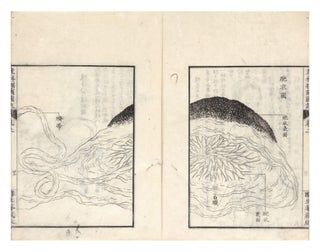Woad into Indigo
Historische, Physische und Öconomische Beschreibung des Waidtes, dessen Baues, Bereitung und Gebrauchs zum Färben, auch Handels mit selbigen überhaupt, besonders aber in Thüringen. Mit Beylagen, und einem Anhange dreyer alter Schriften.
Finely engraved frontis., an attractive engraved vignette on title, & three folding engraved plates. 8 p.l. (incl. frontis.), 157, [3], 120, [8] pp. Two parts in one vol. Large 4to, cont. half-sheep & speckled boards, spine gilt, contrasting leather lettering piece on spine. Halle: Buchhandlung des Waysenhauses, 1752.
First edition of this extremely comprehensive work. “The 1st edition of an extensive 18th-century German treatise on the cultivation, processing, commerce, and use of woad (Isastis tinctoria L.) in Thuringia. The aim of the writer was to promote the production of woad in Thuringia for the economic benefit of the region. The book contains the treatise itself, pt. I, pp. 1-157, and an extensive supplement, pt. II, pp. 1-120. The supplement includes: a collection of laws and regulations about woad in Thuringia between the years 1480 and 1704 (pp. 1-42); excerpts from earlier works — e.g. Hellot’s Art de la Teinture — (pp. 42-58); the reprint in full of Crolachius’ Isatis Herba (pp. 59-90); Laurentius Niska’s Waidtbedencken (pp. 91-108), 1631; and Niska’s appeal to ‘Gustav Adolph, king of Sweden’ (pp. 109-120), 1633, asking the king to promote the cultivation of woad in Thuringia, for economic reasons.”–Ron, Bibliotheca Tinctoria, 950.
Indigo, extracted from the woad plant, was widely used in dyeing. The fine frontispiece depicts the harvesting and processing of the woad plant, and the plates depict the plant.
Schreber (1708-77), a government administrator, was appointed professor of economics and cameral sciences at the University of Leipzig in 1764. His great grandson, Daniel Paul Schreber, was one of Freud’s greatest patients.
Fine copy. Scarce.
❧ Ferchl, p. 485.
Price: $2,950.00
Item ID: 7632






